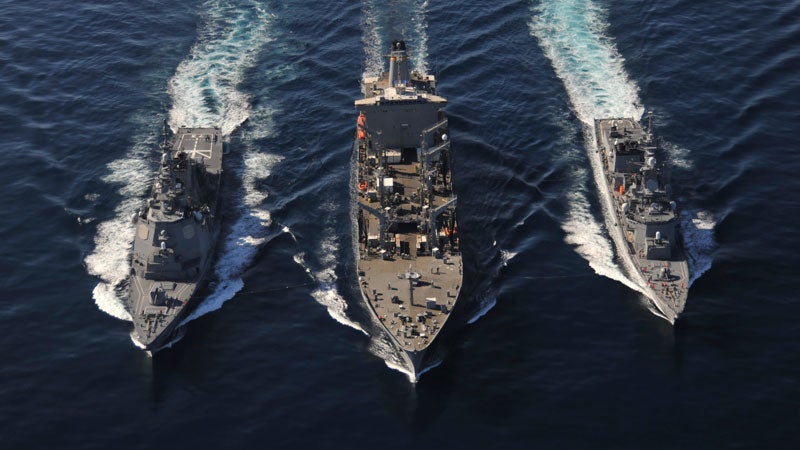After years of research, the U.S. Navy has finally developed the technology to make fuel from seawater, deeming the liquid hydrocarbon fuel a “game changer.” Ships will ultimately be able to produce fuel at sea.
Beyond the obvious benefits of not relying on oil, with its fluctuations in cost and availability, this new tech has as well. Most ships in the U.S. naval fleet have to find a tanker to refuel. Usually going off course or halting a mission, the ships pull parallel to one another as the fleet ship draws fuel from the tanker.
“We are in very challenging times where we really do have to think in pretty , how we value energy, and how we consume it,” Vice Admiral Philip Cullom acknowledged. “We need to challenge the results of the assumptions that are the result of the last six decades of constant access to cheap, unlimited amounts of fuel.”
The science behind the new development extracts carbon dioxide and hydrogen gas from saltwater, which is then transformed from gas to liquid using a catalytic converter. Many improvements and tweaks still need to made, but one major advantage is that the new hydrocarbon fuel can be used in existing engines of the ships and aircraft.
This new technology puts the estimated cost of jet fuel at between $3 and $6 per gallon. The U.S. Naval Research Laboratory has already completed successful model plane test flights with the new fuel. The ability to produce fuel onboard is .


